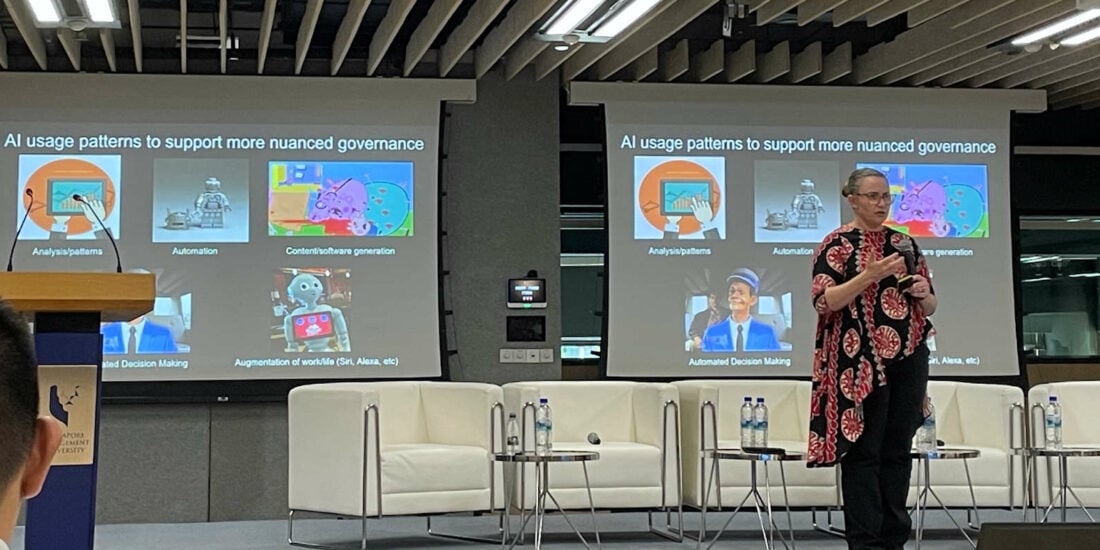
Maximise Productivity and Efficiency of Hearings with Electronic Bundles
The increased availability of digital technology has changed the legal ecosystem, presenting new challenges and opportunities in equal measure. Parties and their counsel are looking for ways to be more economical and effective when resolving disputes.
This article explores the role that electronic bundling (ebundling) technology can play in enhancing hearings for courts, arbitration venues and legal teams alike. We will share a few key reasons for using purpose-built technology over PDF to create electronic bundles.
Bundles of Joy
A good hearing bundle may not win a case, but a bad one could damage it. The hearing bundle put before a court or tribunal contains all the relevant material for a matter. Preparing the hearing bundles requires attention to detail, and seamless coordination between the parties to manage updates.
With guidelines increasingly requiring all parties to move to an electronic system, it’s worth asking the question: what is the best method to employ?
If you are creating bundles using PDF, you are probably familiar with the laborious task of rifling through a high volume of files to add or replace pages, and then having to recirculate the whole PDF to all parties once updated. Furthermore, if the previous version of the PDF had been annotated, users would need to copy their annotations across to the new copy and rely on the index or correspondence to keep track of the changes that have been made. The larger the PDF, the more difficult it will become to manage and search through.
Ebundling Software Saves Time and Improves Productivity
With purpose-built ebundling software, bundles are created in line with the parties’ agreed structure. Each PDF document is assigned a unique Bundle/Tab reference, allowing users to identify individual entries with ease, and eliminating the time-consuming task of searching through a voluminous PDF.
Users can collaborate on documents with their wider team in real-time and automatically have access to the most recent versions of files once released, inclusive of any existing work product on replacement files. Any tags that have been created in ediscovery platforms can be carried across and applied to the relevant hearing bundle documents, which will always remain private to your party.
Separate workspaces are created for each party and further workspaces can be created for other key stakeholders, such as witnesses or experts, if necessary; or they can be given access to the legal team’s workspace, should they wish to collaborate.
Integration from Start to Finish
Hearing preparation can begin electronically at the early case management stages, continuing through to substantive proceedings, as well as any appeals. Teams can collaborate whilst viewing the live feed (either privately, with specific users, or with all users on their workspace), annotating key sections of the transcript to assist with hearing preparation. These annotations carry across to the final transcript after each day of proceedings.
Users can also search for or view documents as they are referred to during proceedings or access them via the hyperlinks created in the finalised transcripts. Documents that are referred to can then be collated within separate bundles to assist counsel when writing closing submissions, or for the presiding authorities when writing judgments or giving an award.
Sustainability
Ebundling software reduces or sometimes eliminates the need to print or use paper. High volumes of bundles no longer need to be produced multiple times and international stakeholders can access the bundle in real-time, meaning bundles no longer need to be transported around the world either. Many firms are now taking steps to be environmentally friendly and meet ESG goals, and a paperless system helps support these objectives.
With virtual hearings remaining prominent following the pandemic, key participants can access the bundle and proceedings from around the world, reducing the need for them to physically travel for hearings as they can still join to give evidence virtually, helping reduce the overall carbon footprint for cases.
Achieve Hearing Compliance
Many courts and arbitration venues have updated rules regarding bundles and are encouraging parties to look towards using more sustainable methods during proceedings, including the use of electronic bundles. When using ebundling software to create bundles, all key documents and materials are in a secure central space. The information is kept secure and confidential, whilst also allowing presiding authorities to access the bundle from anywhere in the world to work on judgments and awards without needing to transport hard-copy bundles.
Employing the Right Technology to Maximise the Efficiency of Hearings
By adopting purpose-built technology solutions for ebundling, you can transform your team’s workflow, increasing reliability and productivity, and meeting the requirements of the court or tribunal while delivering better value to your client.
Opus 2
Opus 2 is a global legal technology leader focusing on disputes. Founded in 2008, Opus 2 is known for revolutionising “paperless” electronic hearings with its multi-award-winning technology. Having powered thousands of hearings worldwide, Opus 2 enables litigation and arbitration teams to deliver even greater service to their clients by leveraging powerful analysis, visualisation and collaboration tools across the whole case lifecycle regardless of matter size or complexity. Opus 2 helps modern legal teams achieve digital transformation initiatives and operate a more sustainable practice by tailoring its solutions to your firm’s specific processes and best practices. Opus 2 is headquartered in London, with offices in Edinburgh, the US, Singapore and Australia. For more information, visit www.opus2.com






